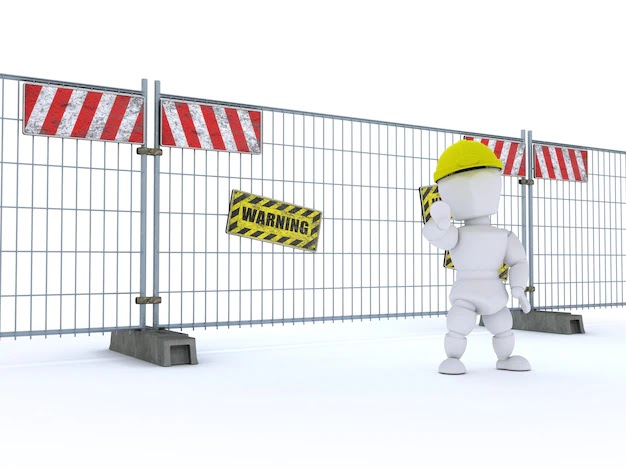
The Art of Conversation
I. Understanding the Importance of Conversation
Before diving into the tips, it's important to understand why conversation matters. Conversations are the foundation of relationships, whether personal or professional. They allow us to share thoughts, express emotions, exchange ideas, and build connections. Good conversations can lead to stronger relationships, better problem-solving, and a deeper understanding of others. On the other hand, poor communication can lead to misunderstandings, conflict, and missed opportunities. By honing your conversational skills, you can improve your relationships, enhance your professional life, and enrich your social experiences.
II. Starting the Conversation: Breaking the Ice
One of the most challenging aspects of conversation is getting started, especially with someone you don't know well. Here are some tips to help you break the ice and initiate a discussion.
1. Use Open-Ended Questions: Open-ended questions are a great way to encourage the other person to share more than just a yes or no answer. Instead of asking, "Did you have a good weekend?" you could ask, "What did you do over the weekend?" This invites the other person to share more details, giving you more material to build on in the conversation.
2. Comment on Your Surroundings: If you're in a situation where you don't know what to talk about, you can always comment on your surroundings. For example, if you're at a conference, you might say, "The keynote speaker was really insightful, what did you think?" This approach is particularly useful in social or professional settings where there is a shared experience to discuss.
3. Share Something About Yourself: Sometimes, starting the conversation can be as simple as sharing something about yourself. This doesn't mean dominating the conversation, but rather offering a small piece of information that invites a response. For instance, you might say, "I've just started reading this new book about [topic], and it's really fascinating. Have you read anything interesting lately?" This not only gives the other person something to respond to but also opens up the conversation to a topic of mutual interest.
4. Use Humor: Humor is a powerful tool in conversation. A light, appropriate joke or a humorous observation can break the ice and make the other person feel more comfortable. However, it's important to gauge the situation and the person you're talking to; humor that is too edgy or offensive can have the opposite effect.
III. Sustaining the Conversation: Keeping the Dialogue Flowing
Once the conversation has started, the next challenge is to keep it going. Sustaining a conversation requires active engagement and attentiveness to ensure that both parties feel involved and interested.
1. Active Listening: Active listening is one of the most important skills in conversation. It involves fully concentrating on what the other person is saying, rather than just waiting for your turn to speak. Show that you're listening by nodding, making eye contact, and responding appropriately. You can also use verbal cues like "I see," "That's interesting," or "Tell me more about that." This not only shows that you're engaged but also encourages the other person to keep talking.
2. Ask Follow-Up Questions: Follow-up questions are a great way to show interest and keep the conversation going. If the other person mentions something intriguing, ask them to elaborate. For example, if they say they've recently taken up a new hobby, you could ask, "What got you interested in that?" or "How are you finding it so far?" This not only keeps the conversation flowing but also deepens the discussion.
3. Share Relevant Stories or Experiences: When appropriate, share your own stories or experiences that relate to the topic at hand. This helps to create a connection and keeps the conversation balanced. However, be mindful not to dominate the conversation with your own stories. The goal is to contribute to the discussion, not to turn it into a monologue.
4. Be Mindful of Body Language: Body language plays a crucial role in conversation. Open, relaxed body language can make the other person feel more comfortable and open to talking. Pay attention to your posture, facial expressions, and gestures. Avoid crossing your arms, looking away, or checking your phone, as these behaviors can signal disinterest.
5. Know When to Switch Topics: Sometimes, a conversation can start to dwindle or lose momentum. It's important to recognize when this happens and to gently steer the conversation in a new direction. You might introduce a new topic by saying, "Speaking of [something related], have you ever [new topic]?" This keeps the conversation fresh and engaging.
IV. Navigating Difficult Conversations
Not all conversations are easy, and sometimes you may find yourself in a discussion that is challenging or uncomfortable. Here are some strategies for navigating difficult conversations while maintaining respect and understanding.
1. Stay Calm and Composed: In difficult conversations, it's important to stay calm and composed. Take deep breaths, and if you feel yourself getting emotional, pause before responding. Keeping your emotions in check allows you to think more clearly and respond more effectively.
2. Use "I" Statements: When discussing sensitive topics, use "I" statements instead of "you" statements. This approach focuses on your feelings and experiences rather than placing blame on the other person. For example, instead of saying, "You never listen to me," you could say, "I feel unheard when I'm trying to express my thoughts."
3. Acknowledge the Other Person’s Perspective: Even if you disagree with the other person, it's important to acknowledge their perspective. You might say, "I understand that you feel strongly about this," or "I see where you're coming from." This shows respect for their viewpoint and helps to keep the conversation constructive.
4. Seek Common Ground: In difficult conversations, finding common ground can help to defuse tension and build understanding. Look for areas where you agree, even if they are small. Acknowledging shared goals or values can help to bridge differences and move the conversation forward.
5. Know When to End the Conversation: Sometimes, the best course of action in a difficult conversation is to end it before it escalates. If the discussion becomes too heated or unproductive, it's okay to suggest taking a break or revisiting the topic later. You might say, "I think we should take a step back and continue this conversation another time." This allows both parties to cool down and reflect before continuing.
V. Building and Maintaining Relationships Through Conversation
The ultimate goal of good conversation is to build and maintain strong relationships. Whether it's with family, friends, colleagues, or new acquaintances, effective communication is key to forming meaningful connections.
1. Be Authentic: Authenticity is the foundation of any strong relationship. Be yourself in conversations, and don't be afraid to share your thoughts and feelings honestly. People are drawn to those who are genuine, and authenticity fosters trust and deeper connections.
2. Show Empathy: Empathy is the ability to understand and share the feelings of others. In conversation, showing empathy means actively listening, acknowledging the other person's emotions, and responding with compassion. Empathy strengthens relationships by making others feel understood and valued.
3. Maintain Regular Contact: Good relationships require regular communication. Make an effort to reach out to people in your life, even if it's just a quick message or phone call. Consistent communication helps to maintain the connection and shows that you care about the relationship.
4. Be Respectful: Respect is crucial in any conversation. This means listening without interrupting, being mindful of the other person's feelings, and avoiding harsh or judgmental language. Respectful communication fosters mutual understanding and strengthens the bond between people.
5. Celebrate Shared Moments: Celebrate shared experiences and moments in conversation. Whether it's reminiscing about a fun time you had together or expressing excitement about a mutual interest, these moments help to solidify your connection and create positive memories.

Conclusion
The art of conversation is a valuable skill that can enrich your personal and professional life. By learning how to start, sustain, and navigate conversations, you can build stronger relationships, enhance your communication skills, and connect more deeply with others. Remember, good conversation is not just about talking—it's about listening, understanding, and engaging with others in a meaningful way. With practice and attention to these tips, you can master the art of conversation and enjoy more fulfilling interactions in all areas of your life.
FAQ
Ques 1: What is the importance of mastering the art of conversation?
Ans: Mastering the art of conversation is essential because it enhances your ability to connect with others, build strong relationships, and communicate effectively. Good conversational skills can lead to better personal and professional interactions, help avoid misunderstandings, and create a positive impression. Whether in casual chats, professional settings, or deeper discussions, being a skilled conversationalist allows you to navigate social situations with confidence and ease.
Ques 2: How can I start a conversation with someone I don't know well?
Ans: Starting a conversation with someone you don't know well can be challenging, but using open-ended questions, commenting on your surroundings, sharing something about yourself, and incorporating humor are effective strategies. Open-ended questions encourage more detailed responses, while comments about shared experiences or environments can provide common ground. Sharing something about yourself or making a light-hearted joke can also help break the ice and create a comfortable atmosphere for conversation.
Ques 3: What are some tips for keeping a conversation going?
Ans: To keep a conversation going, focus on active listening, ask follow-up questions, share relevant stories or experiences, and be mindful of your body language. Active listening involves fully engaging with the other person, showing interest through verbal and non-verbal cues. Follow-up questions show that you're interested in what the other person is saying, while sharing your own experiences helps to create a balanced dialogue. Positive body language, such as maintaining eye contact and nodding, encourages continued conversation.
Ques 4: How should I handle difficult conversations?
Ans: Handling difficult conversations requires staying calm and composed, using "I" statements to express your feelings, acknowledging the other person's perspective, seeking common ground, and knowing when to end the conversation if needed. Staying calm helps you think more clearly, while "I" statements prevent the conversation from becoming accusatory. Acknowledging the other person's viewpoint and finding areas of agreement can help defuse tension and keep the conversation constructive.
Ques 5: How can good conversational skills strengthen relationships?
Ans: Good conversational skills strengthen relationships by fostering authenticity, empathy, respect, and regular communication. Being authentic in your interactions builds trust, while empathy helps others feel understood and valued. Maintaining respect in conversations ensures that both parties feel heard and appreciated. Regular communication, even through small gestures like a quick message or call, keeps relationships strong and reinforces the connection.







Do Leave Your Comment